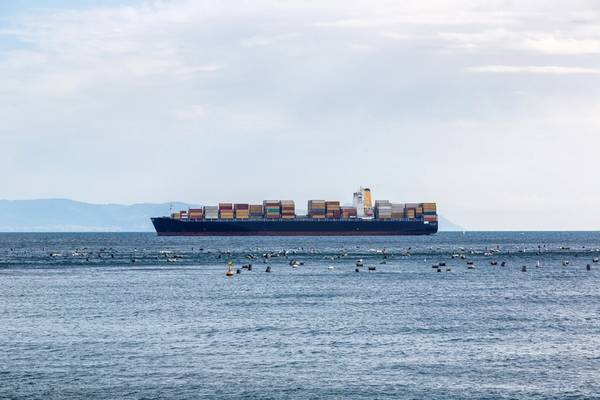Shipping confidence improved for the third successive quarter in the three months to end-November 2016, according to the latest Shipping Confidence Survey from international accountant and shipping adviser Moore Stephens.
In November 2016, the average confidence level expressed by respondents was 5.6 out of 10, equaling the highest rating since August 2015. All main categories of respondent were more confident than in August 2016, when the overall rating was 5.4. Charterers’ confidence this time increased by 2 points, to 6.8, the highest figure in the life of the survey for such respondents. The confidence of owners was up from 5.3 to 5.4, of brokers from 4.5 to 5.6, and of managers from 6 to 6.4. The survey was launched in May 2008 with an overall confidence rating of 6.8.
Confidence was up in Asia, from 5.5 to 5.7, in Europe from 5.2 to 5.4, and in North America from 5.8 to 5.9.
A number of respondents felt that the bottom of the cycle had been reached and that the only way was up. Particular concern was expressed about overtonnaging, insufficient recycling, and the cost of regulatory compliance. One respondent noted, “The oversupply of tonnage will cease when the banks write down bad loans and force owners to sell for scrap,” while another said, “The weak or unlucky will fold or be gobbled up, while the strong or the lucky will grow and succeed.”
The likelihood of respondents making a major investment or significant development over the next 12 months was unchanged, at 4.9 out of 10. Charterers’ confidence in this regard was up from 5 to 6.4, equaling its highest figure since August 2013. Owners’ expectations were also up, from 4.8 to 5, but those of managers and brokers were down, from 5.3 to 5.2 and from 4.1 to 3.8 respectively. According to one respondent, “It is hard to see how major investment to meet environmental regulations can be justified in the current climate.”
The number of respondents expecting finance costs to increase over the coming year rose from 35 percent to 53 percent, the highest level for five years. Owners’ expectations in this regard rose from 31 percent to 58 percent, their highest level since May 2011. The figures for brokers and managers were also up, from 47 percent to 53 percent and from 30 percent to 52 percent, respectively. Charterers were alone in not anticipating any increase in finance costs. “Major investment will be required over the next few years to meet increasingly stringent environmental regulations,” said one respondent, “at a time when earnings are on the floor and bank finance is hard to come by.”
Competition is expected to influence performance most significantly over the next 12 months, just ahead of demand trends, followed by finance costs and tonnage supply. One respondent said, “If demand remains weak, we don’t anticipate any improvement in the shipping markets over the next five years, particularly for dry bulk cargoes.”
The number of respondents expecting higher rates in the tanker market over the next 12 months rose by ten percentage points to 33 percent, the highest figure since August 2015, while the number anticipating lower tanker rates fell from 37 percent to 24 percent. Meanwhile, there was a three percentage-point rise, to 41 percent, in the numbers anticipating higher rates in the dry bulk sector. In the container ship sector, the numbers expecting higher rates rose from 22 percent to 27 percent, but there was a five percentage-point increase, to 21 percent, in those anticipating lower rates. The net sentiment in the tanker markets was +9, while it was +31 in the dry bulk markets and +6 in the container ship trades.
In a stand-alone question, respondents were asked what they considered would be the most important source of funding for the installation of Ballast Water Management (BWM) systems by shipowners. Overall, on a weighted average basis, 21 percent of respondents felt that shipowner equity (shareholder funds) would provide the source of funding. Next came bank finance, at 19 percent, BWM system manufacturers (15 percent), shipyards (12 percent) and other non-bank finance (10 percent). One respondent said, “Financing BWM is almost impossible. Owners have no money for it.”
Richard Greiner, Moore Stephens Partner, Shipping & Transport, says, “This is the third successive increase in shipping confidence recorded by our survey. So despite overtonnaging, weak freight rates, declining demand, insufficient recycling, Brexit, Syria, Trump, despite everything, shipping is still looking up, rather than down. This is not to deny the reality of today’s difficult market, or the sluggish economic climate. But it does say much for the strength of shipping’s backbone and the quality of its mettle.
“Those who can point to a long history in shipping will be better placed to gauge the severity and longevity of the current downturn than those with a shorter pedigree in the industry. But both will need access to finance and to other resources in order to meet the challenges which lie ahead. Not the least of these is the ongoing regulatory environmental compliance program, even if implementation of the BWM convention may be caveated with potential delay and amendment for a little while longer.
“Many of our respondents felt that things can only get better. They are probably right. But for that to happen, freight rates will have to go up. Perhaps it is safer to say for the moment that, if we want things to stay as they are, things will have to change.”





